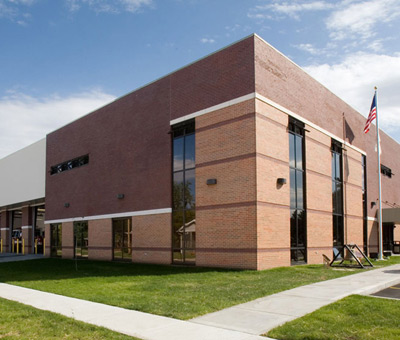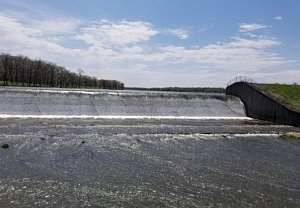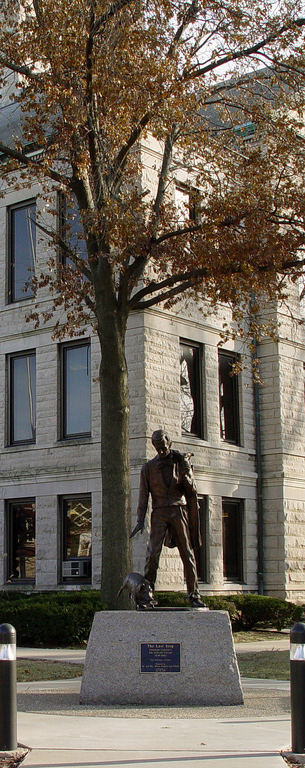(217) 824-2101 Directory →
- Home
- Government
-
City Officials
Maps
Oak Hill Cemetery
City Services

-
- Community
-
Around Taylorville
Education
Media
Healthcare

-
- Business & Resources
- Contact Us
- Search
Illinois Carbon Monoxide Alarm Detector Act
Illinois Carbon Monoxide Alarm Detector Act
Effective January 1, 2007, every dwelling unit will be required to have at least one approved carbon monoxide alarm in an operating condition within 15 feet of every room used for sleeping purposes. Alarms can be battery powered, plug-in with battery back-up or wired into the AC power line with a secondary battery back-up. The alarm can be combined with smoke detecting devices if the combined unit complies with specific standards and the alarm differentiates the hazard.
The Law
The Illinois General Assembly has passed and the Governor has signed the Carbon Monoxide Alarm Detector Act (Public Act 094-0741). This new law, effective January 1, 2007, requires homeowners and landlords to install carbon monoxide detectors in all buildings containing bedrooms and sleeping facilities.
The primary features of the law are:
Every “dwelling unit” must be equipped with at least one operable carbon monoxide alarm within 15 feet of every room used for sleeping purposes.
The alarm may be combined with smoke detecting devices provided the unit complies with respective standards and the alarm differentiates the hazard.
A “dwelling unit” means a room or suite of rooms used for human habitation, and includes single family residences, multiple family residences, and mixed use buildings.
If a structure contains more than one “dwelling unit,” an alarm must be installed within 15 feet of every sleeping room in each “dwelling unit.”
The owner must supply and install all required alarms. A landlord must ensure that the alarms are operable on the date of initiation of a lease. The tenant is responsible for testing and maintaining the alarm after the lease commences.
A landlord is required to furnish one tenant per dwelling unit with written information regarding alarm testing and maintenance.
Willful failure to install or maintain in operating condition any alarm is a Class B criminal misdemeanor.
The Act does exempt certain residential units from the requirement. Those residential units in a building that (i) does not rely on combustion of fossil fuel for heat, ventilation or hot water; (ii) is not connected to a garage; and (iii) is not sufficiently close to any ventilated source of carbon monoxide to receive carbon monoxide from that source OR a residential unit that is not sufficiently close to any source of carbon monoxide so as to be at risk of receiving carbon monoxide from that source, as determined by the local building commissioner shall NOT require carbon monoxide detectors.

| Name | Position | Phone |
|---|---|---|
| Bruce Barry | Mayor | (217) 287-7946 |
| Jolynne Richardson | City Clerk | (217) 824-2101 |
| Crystal Nichols | City Treasurer | (217) 824-2808 |
| Larry Budd | Ward I Alderman | (217) 820-8821 |
| Jim Olive | Ward I Alderman | (217) 820-6870 |
| Steve Dennis | Ward II Alderman | (217) 823-9932 |
| Chris Skultety | Ward II Alderman | (217) 825-8609 |
| Doug Brown | Ward III Alderman | (217) 280-0321 |
| Megan Bryant | Ward III Alderman | (217) 823-6122 |
| Steve Dorchinecz | Ward IV Alderman | (217) 825-5773 |
| Kathy Driskell | Ward IV Alderman | (217) 820-8977 |
| Traci Bentley | HR Manager/Loss Control Manager | (217) 824-3386 |
| Airport | Airport | (217) 824-9313 |
| Andy Goodall | Building & Zoning | (217) 824-8713 |
| Mike Tennant | Cemetery Superintendent | (217) 824-2701 |
| Geoffrey Ortman | Lake Superintendent | (217) 824-5606 |
| Mike Mann | Street & Sewer Superintendent | (217) 824-2559 |
| Marlin Brune | Water Superintendent | (217) 287-1441 |
| Kellie Hamell | Water Billing Office | (217) 824-2919 |
© 2025. City of Taylorville, Illinois. All rights reserved. Design: Serpentine • Accessibility • Sitemap • Login

